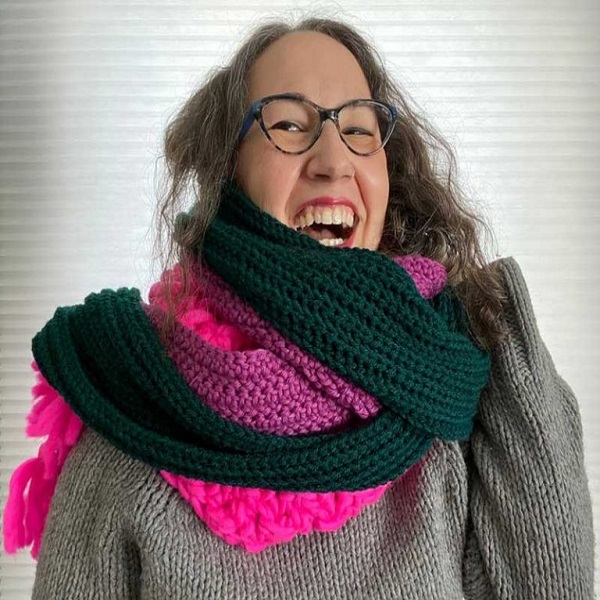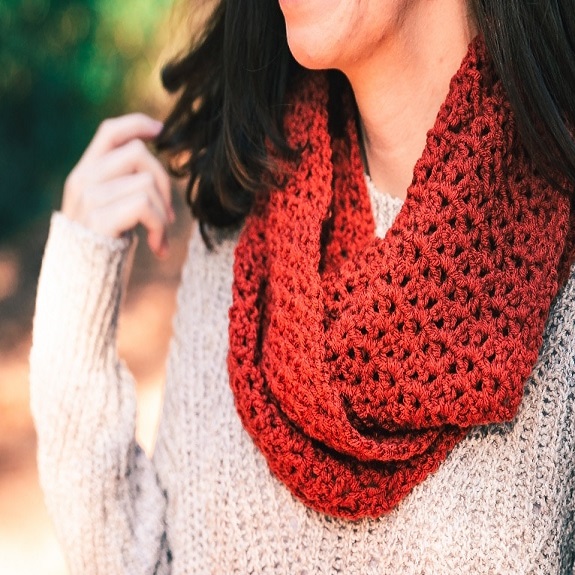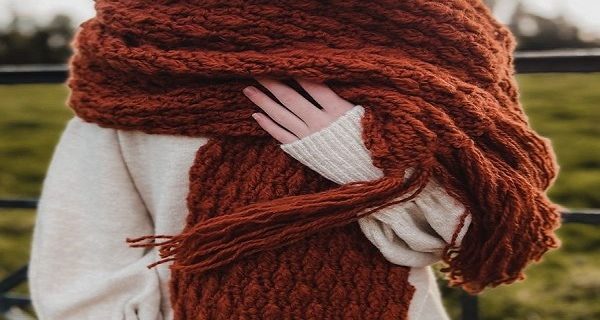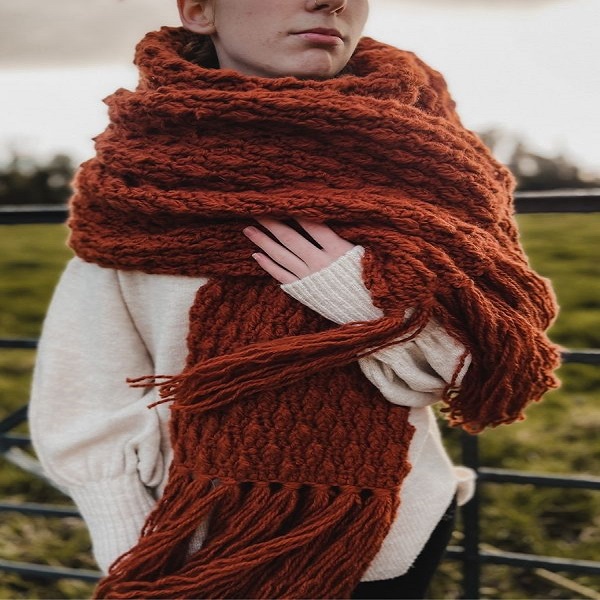Selecting the Right Yarn and Tools
When embarking on the journey of crocheting a scarf, selecting the appropriate yarn and tools is crucial. Begin by choosing a yarn that complements the season for which you’re making the scarf. For winter, a chunky wool or acrylic yarn will provide warmth, while a cotton or bamboo yarn works well for lighter, spring designs. The yarn’s weight should match your intended texture and drape.
Moreover, the selection of crochet hooks is equally important. A hook that corresponds with your yarn’s weight will ensure your stitches are even and consistent. Remember, the thicker the yarn, the larger hook you’ll need. Ergonomic hooks can also reduce hand fatigue, which is ideal for longer projects.
Finally, consider other tools like stitch markers, a tapestry needle for weaving in ends, and a measuring tape to help you keep track of your progress. These tools assist in maintaining accuracy and can make crocheting a scarf a smoother experience. While expertise and the right pattern are crucial, never underestimate the impact of quality yarn and the correct tools on the outcome of your scarf.
 Basic Crochet Stitches for Scarf Making
Basic Crochet Stitches for Scarf Making
Before diving into the details of crocheting a scarf, it is essential to master some basic crochet stitches. These foundational stitches will form the backbone of your scarf, no matter the pattern or design you choose. Here are the stitches to learn:
- Chain Stitch (ch): This is the very first stitch you will need to know. It creates the foundation of your scarf.
- Single Crochet (sc): A simple stitch that is short and tight, providing a firm fabric ideal for warmer scarves.
- Half Double Crochet (hdc): A stitch that is a bit taller than the single crochet, combining warmth with a bit of drape.
- Double Crochet (dc): This stitch is taller, making it faster to work up. It gives the scarf a looser feel perfect for a fall or spring accessory.
- Slip Stitch (sl st): Often used to join stitches together or to create a neat edge.
- Treble Crochet (tr): A tall stitch that creates an open, airy fabric. It works well for a decorative look.
Practice these stitches until they come naturally to you. Consistency in tension and stitch size is key to a professional-looking scarf. Keep your movements even and relaxed as you work. With these basic stitches in your repertoire, you’ll be able to tackle any scarf pattern or design your heart desires.
Deciding on Scarf Length and Width
When crocheting a scarf, deciding its length and width is a pivotal step. Think about who will wear the scarf. A longer scarf can wrap multiple times for warmth, while a shorter one offers a lighter accessory option. As a rule of thumb, an average adult scarf ranges from 60 to 70 inches in length, allowing for ample wrap-around. If creating for kids, shorten the length to around 30 to 50 inches, depending on the child’s size.
As for width, a standard is between 6 to 8 inches for a comfortable fit. If you seek a fashion statement, perhaps go wider. Thin scarves, about 4 inches wide, speak to a more subtle, decorative style.
Remember that yarn type plays a role in dimensions. Bulkier yarns need fewer stitches and rows, resulting in a quicker project. Thinner yarns might need more work but can offer detailed textures. Think about the final look and feel of the scarf. It should match the wearer’s needs and style preferences. Always make a gauge swatch to see how your yarn behaves. This small sample helps you adjust your plans for the perfect scarf size.
Starting Your Scarf: Creating a Foundation Chain
Once you have your tools and have practiced your basic stitches, it’s time to start crocheting a scarf. The foundation chain is the first row of stitches and serves as the base of your project. Here is how to begin:
- Make a Slip Knot: Start by making a slip knot on your crochet hook. This is your very first stitch.
- Determine Length: Decide how long you want your scarf. Remember the average lengths mentioned earlier.
- Create Chain Stitches: Make chain stitches (ch) until you reach the desired length for your scarf.
- Count Your Chains: Count the stitches to make sure you have the right number for your pattern.
- Check for Twists: Before moving on, ensure your chain is straight and not twisted.
Creating the correct number of chains is critical, as it determines your scarf’s width. Take your time with this step. A neat foundation chain means a cleaner and more professional-looking scarf in the end. Once you’ve laid the groundwork, you’re ready to crochet the body of the scarf, stitch by stitch.
Working the Scarf Body: Stitch Patterns and Techniques
After laying the groundwork with a sturdy foundation chain, it’s time to build your scarf’s body. This part involves choosing and applying stitch patterns and crochet techniques that will define your scarf’s texture and overall look.
First, select a stitch pattern that complements the yarn and intended style of the scarf. For a cozy winter scarf, consider using thicker stitches like the double crochet (dc) for extra warmth. If crafting a lighter accessory, a lace pattern with treble crochets (tr) might be more appropriate for breathability and drape.
Begin by working your chosen stitches into the foundation chain. Keep a consistent tension to avoid uneven work. It’s also essential to count your stitches as you go to maintain the correct width throughout the scarf.
Turning the work at the end of each row is a technique you’ll need to master. Remember that turning chains count as the first stitch in the next row for some patterns, especially for taller stitches like double or treble crochets.
Adding a new ball of yarn is another technique to learn. Do this by tying the end of the old yarn to the start of the new one. Weave in the ends with a tapestry needle for a seamless transition.
For a uniform edge, consider using border stitches such as single crochets (sc) or slip stitches (sl st). These can help tidy up any unevenness and give your scarf a finished look.
As you crochet, try different stitch combinations or textures to add interest. This is where you can get creative with your design. Just keep in mind that changing patterns or stitches might also change the scarf’s width or drape, so adjust accordingly.
By following these tips and techniques while working the body of your scarf, you’ll ensure a warm, stylish, and well-made accessory that’s perfect for keeping snug or enhancing an outfit.
Finishing Touches: Edging and Fringes
Once you have the body of your scarf ready, it’s time to add some finishing touches. Adding an edging or fringes can give your scarf a polished and customized look. Here’s how to do it:
- Choose an Edging Style: Edge your scarf with simple single crochet (sc) for a clean finish. For a fancier edge, try a picot or scalloped pattern.
- Start Edging: Attach your yarn at one end, and evenly work your chosen edging stitches along the scarf’s sides.
- Make Fringes: Cut several lengths of yarn, twice as long as you want the fringe. Fold these in half.
- Attach Fringes: Use a crochet hook to pull the folded yarn through the scarf’s ends, then loop the ends through the folded part to secure them.
- Trim Fringes: Ensure all your fringes are even by trimming them with scissors. Be careful not to cut them too short.
By carefully selecting edging styles and adding the option of fringes, you make your crocheted scarf unique. This personal touch can make crocheting a scarf even more rewarding. Take your time with these final steps, as they set your work apart and showcase your skill and creativity.
Caring for Your Crocheted Scarf
After dedicating time to crocheting a scarf, ensure it stays beautiful with proper care. Here’s how:
- Read the Yarn Label: Always check your yarn’s label for cleaning instructions. Follow these to avoid damage.
- Gentle Washing: Use mild detergent and cool water for washing. Hand wash softly to maintain its shape.
- Avoid High Heat: Never use hot water or a hot dryer. High heat can shrink or felt your scarf.
- Drying: After washing, press out excess water with a towel. Dry flat to keep the correct form.
- Refrain from Stretching: Do not hang your scarf to dry, as it may stretch out of shape.
- Storage: Store your scarf in a cool, dry place. Fold it neatly to prevent creases.
- Pilling Maintenance: Use a fabric shaver to remove fuzz balls and keep your scarf looking new.
- Refreshing the Scarf: If your scarf needs a refresh, lightly steam it. Be cautious with heat.
By following these easy steps, you can enjoy your handcrafted scarf for a long time. Treat it well, and it will keep you warm and stylish season after season.
Troubleshooting Common Crocheting Issues
When crocheting a scarf, you may encounter several common issues. Addressing these problems early can save you time and effort. Here are some tips for fixing frequent crocheting challenges:
- Stitch Inconsistencies: If your stitches are uneven, check your tension. Keep your yarn at a steady tension for uniform stitches.
- Edge Curling: For edges that curl, try using a looser grip on the hook. Also, check if your hook size matches the yarn.
- Counting Mistakes: Losing track of your stitches can happen. Count regularly to avoid mistakes, and use stitch markers if needed.
- Unraveling Stitches: If your work unravels, secure your yarn end with a small knot before cutting it. Weave the ends well with a tapestry needle.
- Too Tight or Too Loose Stitches: Adjust your grip on the hook, or practice consistent yarn tension. Consider trying ergonomic hooks for a better hold.
- Joining Yarn: When adding a new yarn ball, make sure you tie a tight knot with the old and new yarn. Then, weave in the ends to hide any knots.
By staying vigilant and adjusting your techniques, you can overcome these issues. Your scarf will look even better after troubleshooting these common crocheting hurdles. Remember, practice makes perfect. Each project helps improve your skill.

